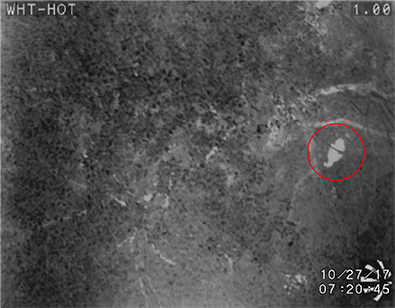Research Research projects at CAS Lab.
NRI: INT: Balancing Collaboration and Autonomy for Multi-Robot Multi-Human Search and Rescue

Each year, thousands of people go missing in the United States. Coordinated search and rescue (SAR) operations provide the best chance to locate a missing individual alive. In remote areas, challenging terrain and other search constraints represent a barrier to human searchers. Robots, however, are subject to different constraints than humans. Unmanned aerial vehicles (UAVs) can explore areas where humans cannot easily go, and gather information on scales that can inform SAR strategy beyond human capability. Multi-robot teams therefore have the potential to transform SAR by augmenting the capabilities of human teams and providing information that would otherwise be inaccessible. This project addresses fundamental challenges that must be overcome to scalably deploy autonomous UAV teams in SAR.
UAV flight optimization for SAR is based upon knowing the right place to look. Lost Person Behavior is the statistical approach which uses several different spatial models, subject categories, and terrain to put search resources in the right place. The different spatial models can be difficult for human planners to visualize and hence fully utilize. Indeed, search planning and management is one of the most demanding spatial tasks. Where to send a UAV, choosing the best sensor to put on the UAV, creating the flight plan, tracking flight plans, tracking potential clues, and applying search theory are difficult challenges faced by SAR volunteers. Our effort will develop new theory and technologies that enable field deployment of autonomous UAV systems and facilitate the process of managing multi-robot teams working in concert with multi-human teams for SAR.
This project focuses on the following objectives of developing: (1) a minimally invasive, adaptive, multi-UAV control system leveraging risk-aware multi-robot planning for human-in-the-loop (HITL) control; (2) distributed computing that opportunistically exploits and balances multi-robot interaction, communication, computation, and decision-making; (3) an interface between human searchers and UAVs that allows control from complete autonomy to manual control, including testable interfaces for exploration vs. exploitation strategies; and (4) extensive testing and evaluation via large-scale prototyping in Virginia Tech's UAV facility, mock searches with support from active SAR veterans, and advisory board oversight from leaders in the SAR community.
Intellectual Merit: This project addresses fundamental challenges in three areas critical to the scalability of future multi-robot multi-human teams: (1) Planning and control systems needed to support UAVs that can autonomously gather information in a cooperative and distributed way while adapting to uncertain human plans; (2) Interfaces for human-robot interactions that allow SAR personnel to collaborate effectively with UAVs and appropriately balance exploration with exploitation; and (3) Scalable autonomous systems that provide real-time support to analyze, store, and share data subject to the power and connectivity constraints typical for SAR.
Broader Impacts: Our efforts will impact several areas beyond search and rescue, including: (1) cross-training undergraduate and graduate students in computational methods and engineering; (2) new educational offerings introducing co-robots to an interdisciplinary audience; (3) development of portable, low-cost, low-power computational infrastructure suitable for a wide range of applications; (4) derivation of new theoretical approaches for HRI in collaborative settings; (5) develop technologies that foster economic opportunity around co-robots; and (6) hands-on field robotic experiences for undergraduate students from groups underrepresented in engineering.
